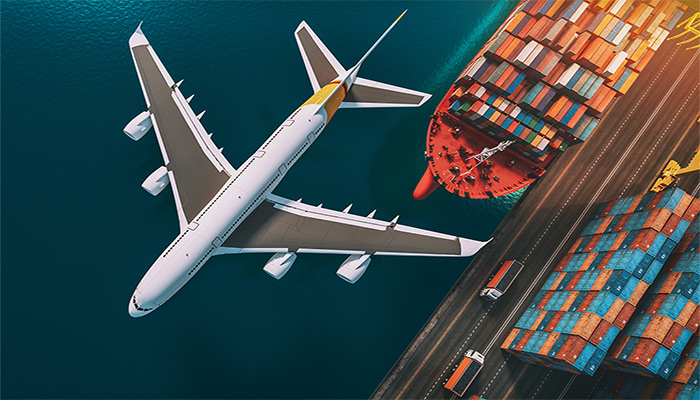The freight forwarding and logistics industry is at the cusp of a transformative era, driven by technological advancements, changing global trade dynamics, and evolving consumer expectations. As we look towards the future, several key trends and innovations are poised to redefine this sector, making it more efficient, transparent, and sustainable. Learn here The Future of Freight Forwarding and Logistics.

Table of Contents
Technological Integration and Digitalization
Artificial Intelligence and Machine Learning
AI and machine learning are revolutionizing logistics by enhancing predictive analytics, route optimization, and demand forecasting. These technologies enable more accurate predictions of transit times, better management of inventory levels, and improved customer service through personalized experiences.
Blockchain for Transparency and Security
Blockchain technology is set to play a significant role in enhancing transparency and security in the logistics chain. By providing an immutable ledger, blockchain can track the provenance of goods, reduce fraud, and streamline customs processes, thereby reducing delays and costs.
Internet of Things (IoT)
IoT devices are increasingly being used to monitor the condition and location of goods in real-time. Sensors can track temperature, humidity, and other environmental conditions, ensuring the integrity of sensitive cargo like pharmaceuticals and perishable goods.
Sustainable Practices and Green Logistics
Eco-friendly Transportation
The push towards sustainability is driving the adoption of electric and hydrogen-fueled vehicles in logistics. These alternatives to traditional diesel trucks offer a way to reduce carbon emissions significantly.
Optimization of Routes and Loads
Advanced software solutions are enabling more efficient route planning and load optimization, reducing the number of trips and the associated environmental impact. Visit to know more https://www.shiply.com/de/speditionsversand/
Changing Global Trade Patterns
Nearshoring and Diversified Supply Chains
In response to disruptions like the COVID-19 pandemic and trade tensions, businesses are reevaluating their supply chains. Nearshoring and diversification of suppliers are becoming more common to mitigate risks and ensure resilience.
E-commerce and Direct-to-Consumer Models
The explosive growth of e-commerce is reshaping logistics. There’s an increasing demand for last-mile delivery solutions and micro-fulfillment centers to cater to the fast delivery expectations of consumers.
Regulatory Changes and Compliance
Increased Focus on Data Privacy and Security
As logistics companies collect and process vast amounts of data, compliance with data protection regulations like GDPR becomes crucial. Ensuring data privacy and security will be a key focus area.
Adaptation to Trade Policies and Customs Regulations
Freight forwarders must stay agile to adapt to changing trade policies and customs regulations, which can significantly impact cross-border transportation.
Read More – Shopify App Development
Human Element and Skill Development
Upskilling and Reskilling of Workforce
The integration of new technologies necessitates the upskilling of the existing workforce. Training in digital tools, AI, and data analytics will be essential.
Collaboration and Human Oversight
While automation and AI are on the rise, the human element remains critical. Strategic decision-making, customer relations, and oversight of automated systems require skilled human intervention.
Conclusion:
The future of freight forwarding and logistics is undeniably exciting and challenging. Embracing technological innovations, adopting sustainable practices, adapting to changing trade patterns, ensuring regulatory compliance, and focusing on workforce development are key to thriving in this dynamic environment. As the industry evolves, those who can effectively integrate these elements will lead the way in redefining global logistics and supply chain management.
Follow – https://viraldigimedia.com For More Updates